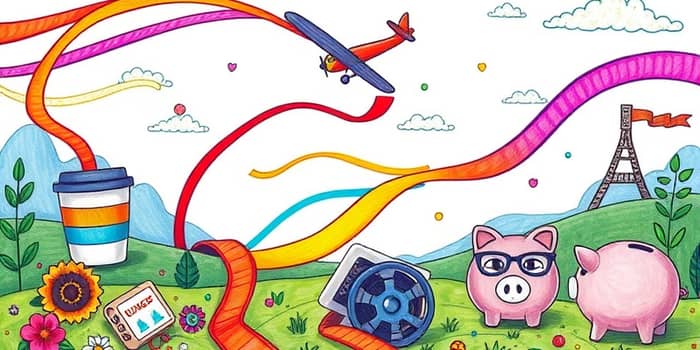
In today’s ever-changing financial landscape, maintaining a strong grasp on your budget requires adaptability. By keeping discretionary categories fluid, you can achieve realistic control over your spending while still enjoying life’s pleasures.
Discretionary spending refers to non-essential expenses that go beyond basic needs like housing, utilities, and groceries. These expenses include dining out, entertainment, travel, hobby supplies, and luxury items that enhance daily life.
For individuals, common examples are streaming subscriptions, concert tickets, gym memberships, and leisure travel. Businesses classify discretionary outlays as marketing campaigns, research and development, office enhancements, and employee perks.
Life circumstances and financial goals can shift rapidly. A hobby today might generate income tomorrow, or a streaming service might become an indispensable source of relaxation during stressful periods. Maintaining a flexible budgeting approach ensures you can adapt without derailing your financial plan.
During economic downturns or unexpected income changes, fluid discretionary categories allow you to reallocate funds quickly. Rather than freezing your budget into rigid compartments, you can make nuanced adjustments that reflect evolving priorities.
Practical budgeting techniques help distinguish between essential and optional spending, ensuring that your financial blueprint remains practical and sustainable.
By regularly revisiting your spending habits, you can curb unnecessary expenses and direct funds to priorities that offer the greatest personal or professional return.
Effective management hinges on awareness and intention. With the right tools, you can transform vague intentions into concrete actions.
Setting clear priorities also prevents impulse buying. When you know which experiences or items deliver the most value, it’s easier to decline fleeting temptations.
Organizations face similar challenges in managing discretionary budgets. Essential expenses include payroll, utilities, and core software subscriptions, while discretionary funds might support marketing, conferences, or employee engagement programs.
Strategic allocation of business discretionary spending can foster innovation and employee satisfaction, but must be balanced against operational stability. By keeping these categories fluid, leaders can reassign resources quickly in response to market shifts or growth opportunities.
Leveraging technology and expert guidance can simplify fluid budgeting and strengthen financial resilience.
Integrating these tools into your routine reduces manual tracking and fosters disciplined spending, even when budgets shift unexpectedly.
Consumer behavior studies reveal that discretionary spending often correlates with emotional states. During periods of stress, people may splurge on comforts or experiences, while uncertainty can lead to extreme frugality.
Recognizing these psychological drivers allows you to build buffers—such as a small “fun fund”—to satisfy emotional needs without jeopardizing major goals. Remaining attuned to broader economic trends, like inflation or market fluctuations, further refines your discretionary categories.
By keeping discretionary categories fluid, you empower yourself or your organization to respond swiftly to change. This dynamic approach fosters both financial discipline and the capacity to enjoy life’s enriching experiences.
Whether you’re an individual aiming to balance savings with leisure or a business leader directing growth initiatives, fluid budgeting is the key to sustainable financial wellness and robust adaptability.
Start today: review your discretionary categories, implement flexible allocations, and leverage the right tools to maintain realistic control over your finances, whatever the future may bring.
References













